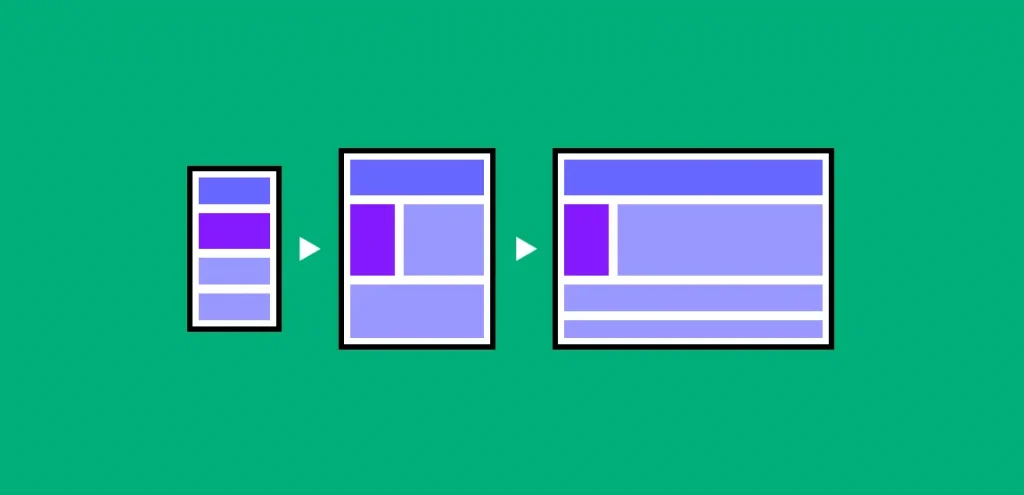How can I produce the greatest content for SEO?

Crucial components
The audience will be the focus of all SEO content this year.
You need to employ strategies that will help your business if you want to enhance your marketing approach and achieve a genuine return on investment (ROI).
High traffic-generating, highly rated content that always has the user in mind is always written with this in mind.
The finest SEO content advice we have today is reader-centered.
To achieve, you must be informed and comprehend.
Because your content will elevate the site when you write to the appropriate audience in the appropriate manner.
Describe SEO content
It is helpful to dissect the phrase into its constituent pieces in order to comprehend what SEO content marketing means:
Search engine optimization, or “SEO,” is the act of making a website more easily discoverable by users using search engines like Google.

We define “content” as any information that exists online and can be accessed by users.
Thus, combining these two ideas, SEO content is any content produced with the intention of generating search engine traffic.
The best time to conduct keyword research is before you begin writing if you want to increase search traffic.
By writing about subjects that people are already searching for information about, you can concentrate on keywords for which there is already a specific amount of searches.
Know where and how to employ keywords in your content for optimal searchability with keyword optimization.
(SEOMoz has a great manual for on-page optimization.)
Logic should guide the structure of the content on your website.
In addition to helping your site’s visitors find other content that is comparable, this is beneficial for SEO.
(It’s best if people stay on your site for a while.)
Promotion of content: Make fresh content more visible by posting it to social networks and establishing links to it (both internally and on external sites).
Ingredients for the finest SEO content
Here are the top 11 suggestions to help you produce the most valuable, read, and shared content possible this year.

1. Write for the appropriate audience using certain keywords.
If you don’t use certain keywords to optimize your SEO material, it won’t reach the correct audience.
By “targeted keywords,” what do I mean?
Your niche demographic uses these key words and phrases when searching.
In order to locate these terms, you must first comprehend:
- Who makes up your target demographic?
- What specific information are they seeking?
- Why does he require this knowledge?
- What search terms do they employ to locate them.
This could appear difficult, but if you divide it into smaller tasks, it’s really not:
- Identify the audience you believe wants or needs what you have to offer by conducting audience research.
- then learn about their demographics, statistics, and personal habits and preferences.
- Find profitable terms that are pertinent to your area of expertise, goods and services, and the search intentions of your target market by conducting keyword research.
- Find relevant subjects: Look for content ideas based on the keywords you found and what your audience is interested in learning or understanding.
1.1 Keywords picked
There is a straightforward checklist you may use to create a perfectly optimized page:
- Specific keywords
- When writing, keyword research must always come first.
It’s crucial to match your keyword research with the content you produce.
Utilize tools like Google Keyword Planner to find the keywords that people are searching for related to your selected theme.
Avoid going into content development without a plan; start by creating a list of keywords.
Your content should be built around this, and other elements on the website will be influenced by the keywords you select.
Bottom line: You’ll struggle to position yourself for anything competitive if you don’t target your content to specific keywords from the beginning.
The task of keyword research should be simpler if it supports the content you are presently working on because you should have established related themes while developing the page.
1.2 Include the keywords in the opening sentence.
A word of advice: resist the urge to stuff your keyword into every single sentence of your article.
The days of keyword stuffing may have previously been successful, but thank goodness they are long gone.

But it’s crucial to incorporate your main keyword into your text, so make sure you do it naturally.
The keyword should appear in the opening paragraph, ideally within the first 100 words.
1.3 Using keywords with semantic meaning
The secret to ranking your content successfully is to show that it is relevant, and the best way to achieve this is to use semantically related keywords consistently throughout your writing.
The keyword density was the focus of the search industry before to Panda and Hummingbird.
Fortunately, that is now history.
When you write naturally, you frequently employ words or phrases that are semantically related to one another throughout the content.
To come up with suggestions for concepts that are semantically connected, however, it might be helpful to use a tool like LSIGraph.
2. Put readability first
There are a number of crucial elements in the SEO content that propels the website to the top of the SERPs, including the following crucial component:
- Be really simple to read.
- Every element on the page encourages viewers to stay and read when they click your link.
- And when it sits and reads, it gives Google a fantastic impression of your page.
This signal is known as dwell time, or the amount of time that passes between when a user clicks on a search result and when they go back to the results page.
Readability includes:
- Clarity
- Organization
- Logic
- Simplicity
Your article must present all forms of information in an understandable manner in order to be read.
Additionally, more visitors will stay longer when your material is simple to grasp, which will improve your Google rankings.
3. Develop richer content
The creation of content that delves deeper and deeper into a topic will be a major SEO trend for 2023.
With Google placing a greater emphasis on quality material, this helps with ranking improvements.
So, how should deeper content be created?
- Create lengthy blog posts; aim for 2,000 words or more.
- Examine subjects that can be viewed from a variety of perspectives.
- Produce final guidelines.
- Look beyond the obvious in your research.
To obtain fresh information and studies, consider Google Scholar, JSTOR, or industry publications rather than performing a quick Google search.
4. Increase page load time
A straightforward method to enhance your SEO content in 2023:
- Boost website load times.
- Quicker loading and presentation of help pages and content.
- Your users will become angrier the slower your page loads.
Who desires to wait while a website loads?
Half of consumers won’t wait more than 3 seconds for a retail page to load, according to a BBC News investigation.
Additionally, according to research by the Nielsen Norman Group, most consumers will exit the pages within 10 to 20 seconds.
5. Spend money on photos and videos
Research shows that publications with pertinent photographs receive 94% more views than articles without images.

This is due to the fact that we are accustomed to viewing visuals and reacting to them.
However, using high-quality, well-designed images rather than a few haphazard stock photos will have a much bigger impact on your content.
With the correct photos, your material will appear more cohesive, professional, and authoritative, therefore investing in them is a fantastic option for a stronger SEO strategy.
6. Format the material to include the suggested snippets.
In the SERPs, featured snippets attract a lot of attention, and this trend will continue in 2023.
When a user asks a question, these brief pieces of data may be shown on a results page, according to Google.
As you can see, featured snippets belong right at the top of the page, which is a position that is greatly desired!
This is due to featured snippets actually siphoning traffic away from position one.
There are a few strategies you can use to prevent the likelihood of your material being “removed” for a certain fragment:
- Provide answers inside your article.
- Ensure that your content is of the greatest caliber.
- Make use of markers and numbered lists.
- Incorporate data and statistics.
- Arrange the content logically.
7. Pay attention to H1 and H2 tags
In most cases, the title of your material is enclosed in an H1 tag.
The “insert title here” prompt appears in the H1 tag on WordPress.
Your title tag and your H1 tag will be pretty similar.
To give your H1s more punch, you may always add a few details.

For subheadings that support the primary heading, H2 tags are frequently utilized.
Use organic versions of your keywords in some of the H2 (or H3) tags to avoid keyword stuffing.
7.1. Improved H2 tags
The position of the page has already been framed in an H1 tag, but you must make sure to frame the subheadings in the H2 tags (or H3 – if there are subheadings in other subheadings).
Think of H tags as a hierarchy where you start at the top of the page with the most significant heading and work your way down.
Use H2 tags for subheadings if they all have the same contextual importance.
Use H3, then on after that in a logical arrangement if there are distinct sections inside them.
Avoid the mistake of putting your target word into an H2 tag straight and instead incorporate alternatives that make sense for the content.
Keep H2 tags brief and keep in mind that you don’t always need to use a keyword variant; if there isn’t an obvious inclusion, only one will do.
8. Design for Mobile-First
In the first three months of March, Google began transitioning to a mobile index.
According to them, “Mobile-first indexing” indicates that in order to better assist our users in finding what they’re looking for, indexing and ranking will be done using the mobile version of the website.

Make sure to adhere to mobile best practices while creating content to rank in the SERPs.
Thankfully, there’s a decent chance that your website is already responsive (or has a mobile version), but pay attention to how your content appears on mobile devices.
Taking control and having the mobile Googlebot identify any potential issues is an excellent practice.
What exactly is a “Mobile-First Layout Design”?
A web design technique called responsive web design enables the web to automatically adapt to the displays of various devices, showing content in a way that is user-friendly.
This significantly lessens user actions while exploring the web, such as panning, zooming, and scrolling.
9. Long, original, and informative content
Regarding the content’s duration, there is yet another crucial consideration.
A marketer frequently wonders how long a piece of content should be.
How lengthy should it be? is a question that many people frequently ask.
Generally speaking, you should make sure that your material covers a topic in depth; however, this will vary from industry to industry.
There are certainly exceptions, such as news announcements and the like, which are unlikely to be long, thus it’s necessary to create original and lengthy instructive content that benefits your audience.
Refrain from publishing anything merely for the sake of publishing.
Always make an effort to create high-quality material that targets user purpose, assists in problem solving, and provides answers.
Do not fall into the quantity over quality trap.
10. Compose distinctive meta descriptions
Although meta descriptions are not used by Google to determine rankings, they do affect click-through rates (CTR).
A excellent meta description would have the following:
- Employing the primary or target keyword
- A strong argument to click
- A brief call to action, if necessary (such as “30-day free trial”).
11. Make catchy title tags
The title tag is crucial since it will appear as the title of your content on search engine results pages.
Once more, make sure to use your core keyword.
Make the most of the content tag’s 60 character maximum by being as relevant as you can.







